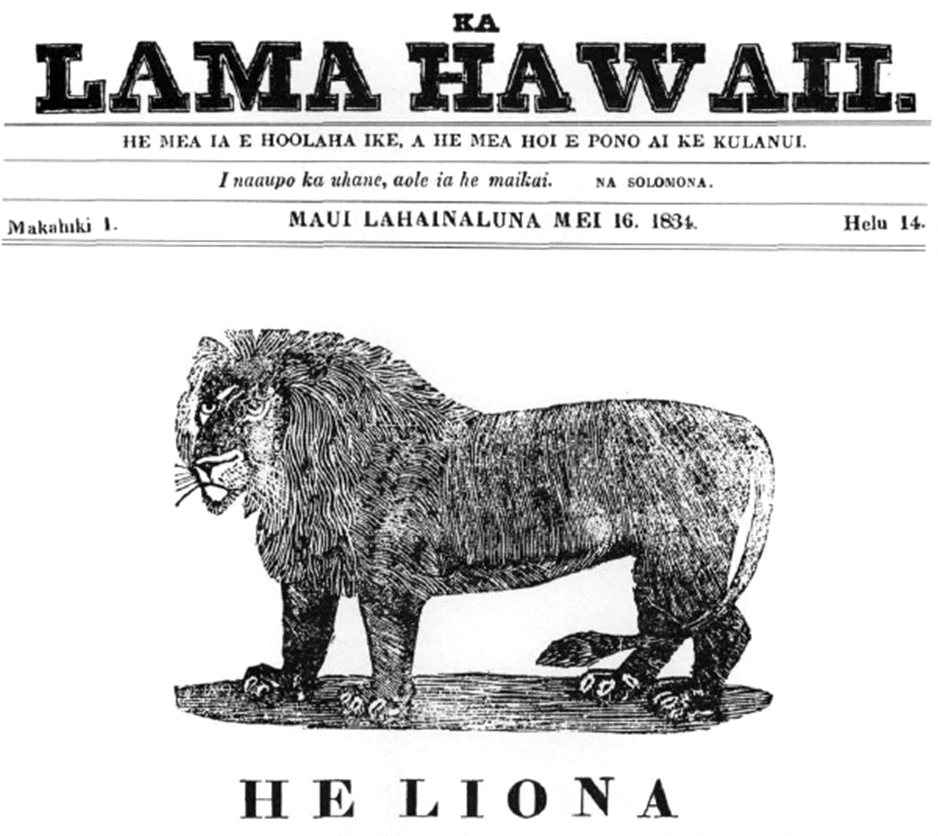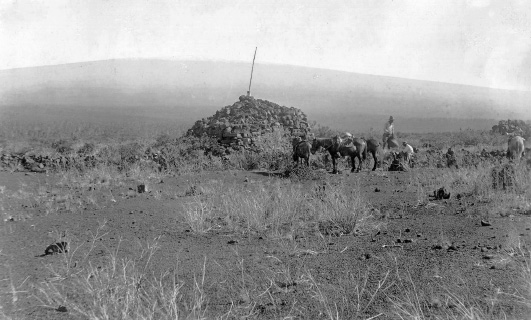|
ªEhu
ªEhu was an ancient Hawaiian nobleman (''Ali ªi The ali ªi were the traditional nobility of the Hawaiian islands. They were part of a hereditary line of rulers, the ''noho ali ªi''. Cognates of the word ''ali ªi'' have a similar meaning in other Polynesian languages; in MƒÅori it is pronoun ...'') and the Chief of Kona (a place on the island of Hawai ªi). Life ªEhu was most likely born on the island of Hawai ªi. His parents were the High Chief Kuaiwa of Hawai ªi and one of his wives, Kamanawa-a-Kalamea. ªEhu became the ruler of Kona, one part of Hawai ªi. He married Kapohauola, and their son was ªEhunuikaimalino. Another wife of ªEhu was a woman called Kaho ªea (Ka-ho ªea), and they had a son named Kama- ªiole. After the death of ªEhu, his son ªEhunuikaimalino became the Chief of Kona. See also * Kuaiwa * Alii nui of Hawaii References External links Ehu ('Ehu) (Alii-o-Kona) {{Authority control House of Pili ... [...More Info...] [...Related Items...] OR: [Wikipedia] [Google] [Baidu] |
Kapohauola
Kapohauola was a High Chiefess in ancient Hawaii, Chiefess of Hawaii island and Queen consort of Maui. She is mentioned in ancient legends and was also called Kualua. Samuel Kamakau mentioned her in his book ''Tales and Traditions of the People of Old''. Biography Kapohauola was a sister of Princess Kapohanaupuni of Hilo. This means that her parents were King Kahokuohua and his wife Hi ªikawaiula. She was born around 1503. She married her nephew Kakae, King of Maui. Their son was famous King Kahekili I, who is also known as "Kahekili the Great". He impoverished his Kingdom and people by many war campaigns. Kapohauola was a grandmother of beautiful Princess Keleanohoanaapiapi who is the main character of one ancient chant, and Kawaokaohele, who was the King of Maui. She also married High Chief ªEhu ªEhu was an ancient Hawaiian nobleman (''Ali ªi The ali ªi were the traditional nobility of the Hawaiian islands. They were part of a hereditary line of rulers, the ''n ... [...More Info...] [...Related Items...] OR: [Wikipedia] [Google] [Baidu] |
Kuaiwa
Kuaiwa was a High Chief of Hawaii from 1345 to 1375. Kuaiwa was son of Kalaunuiohua and his wife, Kaheka. Kuaiwa followed his father as sovereign of Hawaii. Kuaiwa had two wives, Kumuleilani and Kamanawa. The former descended from Luaehu; the latter descended from Maweke of the Nanaulu line. Kamanawa's name means "the season". With Kamuleilani, Kuaiwa had three children, Kahoukapu, Hukulani, and Manauea, and with Kamanawa, Kuaiwa had son, ªEhu ªEhu was an ancient Hawaiian nobleman (''Ali ªi The ali ªi were the traditional nobility of the Hawaiian islands. They were part of a hereditary line of rulers, the ''noho ali ªi''. Cognates of the word ''ali ªi'' have a similar meaning in o ..., all of whom became heads of aristocratic families. References {{s-end House of Pili Hawaiian chiefs ... [...More Info...] [...Related Items...] OR: [Wikipedia] [Google] [Baidu] |
Hawaiian Language
Hawaiian (', ) is a critically endangered Polynesian language of the Austronesian language family, originating in and native to the Hawaiian Islands. It is the native language of the Hawaiian people. Hawaiian, along with English, is an official language of the U.S. state of Hawaii. King Kamehameha III established the first Hawaiian-language constitution in 1839 and 1840. In 1896, the Republic of Hawaii passed Act 57, an English-only law which subsequently banned Hawaiian language as the medium of instruction in publicly funded schools and promoted strict physical punishment for children caught speaking the Hawaiian language in schools. The Hawaiian language was not again allowed to be used as a medium of instruction in Hawaii's public schools until 1987, a span of 91 years. The number of native speakers of Hawaiian gradually decreased during the period from the 1830s to the 1950s. English essentially displaced Hawaiian on six of seven inhabited islands. In 2001, native ... [...More Info...] [...Related Items...] OR: [Wikipedia] [Google] [Baidu] |
Abraham Fornander
Abraham Fornander (November 4, 1812 – November 1, 1887) was a Swedish-born emigrant who became an important journalist, judge, and ethnologist in Hawaii. Early life and education Fornander was born in Öland, Sweden on November 4, 1812, to Anders (1778–1828) and Karin Fornander (1788–1872). His education was under his father, a local clergyman, except for the years 1822–1823 when he studied Latin, Greek language, Greek, and Hebrew at Gymnasium (school), gymnasium in Kalmar. His mother's surname was spelled Foenander, so his surname is sometimes spelled that way. In 1828, he began studying theology at the University of Uppsala, transferring in 1830 to the University of Lund. In 1831, he left university to attend to his family, which had fallen under hard times. While providing for his family, he fell in love with his mother's youngest sister, who was four years his senior. After a short affair, Fornander left Öland, traveling to Malmö and then Copenhagen, from where he ... [...More Info...] [...Related Items...] OR: [Wikipedia] [Google] [Baidu] |
Ali ªi
The ali ªi were the traditional nobility of the Hawaiian islands. They were part of a hereditary line of rulers, the ''noho ali ªi''. Cognates of the word ''ali ªi'' have a similar meaning in other Polynesian languages; in MƒÅori it is pronounced " ariki" and in Tahitian ari'i. Background In ancient Hawaiian society, the ''ali ªi'' were hereditary nobles (a social class or caste). The ''ali ªi'' consisted of the higher and lesser chiefs of the various levels on the islands. The ''noho ali ªi'' were the ruling chiefs. The ''ali ªi'' were believed to be descended from the deities. There were eleven classes of ''ali ªi'', of both men and women. These included the '' kahuna'' (priestesses and priests, experts, craftsmen, and canoe makers) as part of four professions practiced by the nobility. Each island had its own ali ªi nui, who governed their individual systems. ''Ali ªi'' continued to play a role in the governance of the Hawaiian islands until 1893, when Queen Lili ªuoka ... [...More Info...] [...Related Items...] OR: [Wikipedia] [Google] [Baidu] |
Kona District, Hawaii
Kona is a ''moku'' or district on the Hawaii (island), Big Island of Hawaii in the State of Hawaii, known for its Kona coffee and the Ironman World Championship Triathlon. In the administration of Hawaii County, Hawaii County, the ''moku'' of Kona is divided into North Kona District (''Kona Akau'') and South Kona District (''Kona Hema''). "Kona" sometimes refers to its largest town, Kailua, Hawaii County, Hawaii, Kailua-Kona. Other towns in Kona include Kealakekua, Hawaii, Kealakekua, Keauhou, Holualoa, H≈çnaunau, Hawaii, H≈çnaunau and Honalo, Hawaii, Honalo. Description In the Hawaiian language, ''kona'' means leeward or dry side of the island, as opposed to ''ko‚Äòolau'' which means windward or the wet side of the island. In the times of Ancient Hawai ªi, ''Kona'' was the name of the leeward district on each major island. In Hawai‚Äòi, the Pacific anticyclone provides moist prevailing northeasterly winds to the Hawaiian islands, resulting in orographic precipitation, rain wh ... [...More Info...] [...Related Items...] OR: [Wikipedia] [Google] [Baidu] |
Hawaii (island)
Hawaii is the List of islands of the United States by area, largest island in the United States, located in the Hawaii, state of Hawaii, the southernmost state in the union. It is the southeasternmost of the Hawaiian Islands, a chain of volcanic islands in the Pacific Ocean, North Pacific Ocean. With an area of , it has 63% of the Hawaiian archipelago's combined landmass. However, it has only 13% of the archipelago's population. The island of Hawaii is the third largest island in Polynesia, behind the North Island, North and South Islands of New Zealand. The island is often referred to as the Island of Hawaii or Hawaii Island to distinguish it from the state. It is also referred to as The Big Island, due to its size relative to the other islands. In Hawaiian language, Hawaiian, the island is sometimes called ''Moku o Keawe''. The word ''keawe'' has several meanings. One definition, "southern cross", is said to be the name of an ancient chief. Another definition is "the bearer". ... [...More Info...] [...Related Items...] OR: [Wikipedia] [Google] [Baidu] |
Mary Kawena Pukui
Mary Abigail Kawena ªulaokalaniahi ªiakaikapoliopele Naleilehuaapele Wiggin Pukui (20 April 1895 ‚Äì 21 May 1986), known as Kawena, was a Hawaiian scholar, author, composer, hula expert, and educator. Life Pukui was born on April 20, 1895, in her grandmother's home, named Hale Ola, in Haniumalu, Ka ª≈´, on Hawai ªi Island, to Henry Nathaniel Wiggin (originally from Salem, Massachusetts, of a distinguished shipping family descended from Massachusetts Bay Colony governor Simon Bradstreet and his wife, the poet Anne Bradstreet) and Mary Paahana Kanakaole, descendant of a long line of kahuna (priests) going back centuries. Pukui's maternal grandmother, Naliipoaimoku, was a ''kahuna laau lapaau'' (medicinal expert) and ''kahuna pale keiki'' (midwife) and a hula dancer in Queen Emma's court. She had delivered the child, and asked Pukui's parents for the child to raise in the traditional way, and her request was granted. Kawena was born into the Fire Clan of Ka ª≈´. Kawena and her ... [...More Info...] [...Related Items...] OR: [Wikipedia] [Google] [Baidu] |
Ali ªi Nui Of Hawaii
The following is a list of ''Ali ªi nui'' of Hawai ªi. The ''ali ªi nui'' is the supreme ruler (sometimes called the "King" or ''Moi'') of the island. ''Ali ªi'' refers to the ruling class of Hawai ªi prior to the formation of the united kingdom. Here, "Hawai ªi" refers to the island of Hawai ªi, also called "the Big Island". ''Ali ªi nui'' of the Big Island * Pilika ªaeia, 1110‚Äì1130 * Kukohou, 1130‚Äì1150 * Kaniuhu, 1150‚Äì1180 * Kanipahu, 1180‚Äì1210 * Kama ªiole, usurper of Kanipahu, deposed by Kalapana, 1245‚Äì1250 * Kalapana of Hawai ªi, 1250‚Äì1270 * Kaha ªimaoele ªa, 1270‚Äì1300 * Kalaunuiohua, 1300‚Äì1345 * K≈´ ªaiwa, 1345‚Äì1375 * Kahoukapu, 1375‚Äì1405 * Kauholanuimahu, 1405‚Äì1435 * Kihanuilulumoku, 1435‚Äì1460 * Lƒ´loa, 1460‚Äì1480 * HƒÅkau, 1480‚Äì1490 Unbroken line of rule to this point. Hakau, Liloa's first born and named heir, was overthrown by Liloa's second son Umi-a-Liloa; however, the hereditary line of Liloa is unbroken and continues. * 'Umi- ... [...More Info...] [...Related Items...] OR: [Wikipedia] [Google] [Baidu] |


